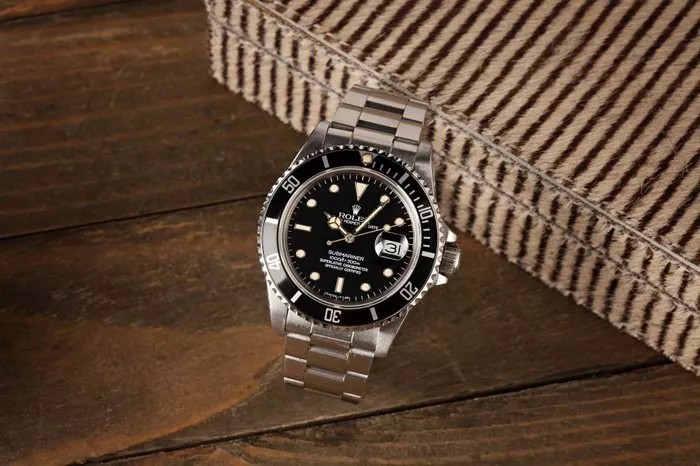In the realm of luxury watches, Rolex and Cartier stand as titans, each with a distinct heritage and reputation for crafting timepieces that transcend mere functionality. The debate over whether Rolex is superior to Cartier, or vice versa, has been a topic of discussion among horology enthusiasts. In this comprehensive analysis, we will delve into various aspects of both brands, comparing their histories, craftsmanship, iconic models, brand philosophies, and market perceptions to provide insights into the enduring question: Is Rolex truly better than Cartier?
1. Brand Histories and Heritage
Rolex Legacy: Established in 1905, Rolex boasts a storied history of innovation and precision. It pioneered advancements such as the first waterproof wristwatch (Rolex Oyster) and the perpetual rotor mechanism.
Cartier Elegance: Founded in 1847, Cartier has a rich heritage in luxury and design. Known for its association with royalty and celebrities, Cartier is synonymous with timeless elegance and innovative jewelry craftsmanship.
2. Craftsmanship and Technical Innovation
Rolex Precision: Rolex is renowned for its commitment to precision and reliability. Each Rolex watch undergoes rigorous testing, and the brand is credited with creating movements that set industry standards.
Cartier Artistry: Cartier excels in artistic design and craftsmanship. The brand’s watchmaking prowess is complemented by its expertise in creating exquisite jewelry pieces, blending creativity with technical excellence.
3. Iconic Models and Designs
Rolex Submariner: The Rolex Submariner is an iconic diver’s watch, celebrated for its durability and timeless design. It has become a symbol of adventure and is highly sought after in the watch-collecting community.
Cartier Tank: The Cartier Tank, introduced in 1917, is an enduring symbol of elegance and sophistication. Its rectangular case and minimalist design make it a classic choice for those seeking refined aesthetics.
4. Materials and Manufacturing
Rolex Materials: Rolex is known for using high-quality materials such as Oystersteel, Everose gold, and Cerachrom. The brand controls its entire manufacturing process, ensuring precision and consistency.
Cartier Craftsmanship: Cartier prioritizes fine materials like precious metals and diamonds. The brand’s commitment to detail extends to its meticulous craftsmanship and gem-setting techniques.
5. Brand Recognition and Prestige
Rolex Prestige: Rolex is synonymous with luxury and success. The brand’s commitment to excellence has earned it a place as a status symbol, and its watches are often associated with achievements and milestones.
Cartier Elegance: Cartier embodies a sense of refined elegance and sophistication. The brand’s royal clientele and timeless designs contribute to its image as a symbol of luxury and style.
6. In-House Movements and Innovation
Rolex Movements: Rolex is known for its in-house movements, a testament to the brand’s dedication to quality and innovation. The perpetual rotor, Parachrom hairspring, and Superlative Chronometer certification showcase Rolex’s technical prowess.
Cartier Watchmaking: Cartier collaborates with Swiss manufacturers for some movements while incorporating in-house movements for select models. The brand focuses on ensuring its watches meet high standards of precision.
7. Resale Value and Investment Potential
Rolex Resale Value: Rolex watches, particularly certain iconic models, are known for holding their value well in the resale market. The demand for Rolex timepieces contributes to their potential as investment pieces.
Cartier Investment: While Cartier watches may not always match Rolex in terms of resale value, certain limited-edition or vintage Cartier pieces can appreciate in value, especially those with historical significance.
8. Popularity and Market Perceptions
Rolex Popularity: Rolex is often seen as a symbol of success and is highly sought after globally. The brand’s popularity is reflected in its presence in various cultural contexts, including film, sports, and business.
Cartier Distinctiveness: Cartier, while not as ubiquitous as Rolex, holds a distinctive allure. The brand’s focus on elegance and creativity appeals to those seeking a sense of individuality and sophistication.
9. Pricing and Accessibility
Rolex Pricing: Rolex watches are positioned in the high-end luxury market, and their pricing reflects the brand’s reputation for quality and exclusivity. The premium associated with Rolex contributes to its perceived value.
Cartier Accessibility: Cartier offers a range of watches at different price points, providing more accessible options while maintaining the brand’s commitment to quality and design.
Conclusion
Determining whether Rolex is better than Cartier is subjective and dependent on individual preferences, priorities, and values. Rolex excels in precision engineering, technical innovation, and a robust sports watch lineup, making it a favorite among those valuing reliability and status. On the other hand, Cartier distinguishes itself with timeless elegance, artistic design, and a rich history of serving royalty and celebrities.
Ultimately, the choice between Rolex and Cartier comes down to personal taste, lifestyle, and the attributes one prioritizes in a luxury timepiece. Both brands have carved their niches in the horological landscape, offering unique experiences and expressions of luxury. Whether one leans towards the robust functionality of a Rolex or the refined sophistication of a Cartier, the decision is a reflection of the wearer’s individual style and appreciation for the artistry that these esteemed watchmakers bring to the wrist.

